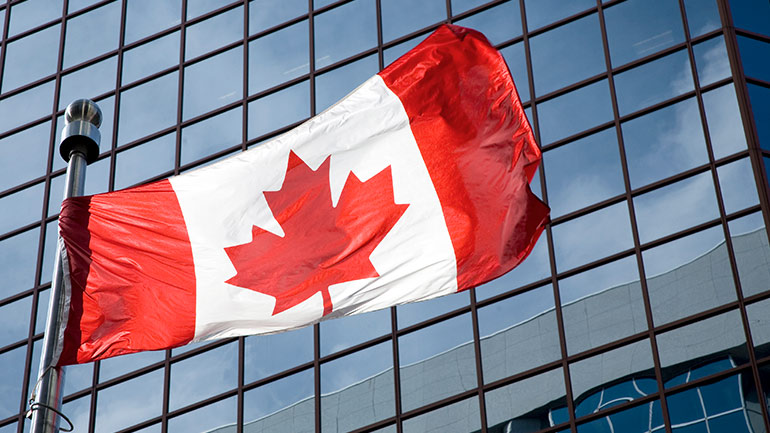December BoC Preview: Heads, We're Slowing Now. Tails, We're Slowing Soon.
By: Andrew Kelvin, Robert Both, Chris Whelan, Mazen Issa
December 5, 2022 - 6 minutes
Arguments for 25bps
- A substantial amount of tightening is already in the system. Debt sensitivity is the most important factor underpinning the growth outlook in our view, particularly given potential non-linearities in the transmission of monetary policy. We think it would be prudent to proceed more cautiously going forward.
- Ex-food and energy CPI is showing signs of deceleration. The seasonally adjusted ex-food & energy measure printed at +0.2% m/m in October, its slowest pace since November 2021, and the 3m trend is at its lowest level since January 2022. Similarly, measures of input prices, shipping costs, and expected output prices are all showing signs of moderation.
- Fiscal stimulus won't get in the way. We do not expect the federal government to get in the BoC's way in 2023. The 2022 Fiscal update included only minor increases in spending and instead focused on the improving picture for federal finances.
- BoC seeking balance. Recent comments from the Bank of Canada suggest a degree of apprehension around the pace of tightening. Governor Macklem opened the door to slowing the pace of tightening following the October BoC announcement and acknowledged that the BoC was getting close to the end of its tightening cycle.
Arguments for 50bps
- Core inflation remains too high. While the BoC is no doubt relieved to see that headline inflation has probably peaked, core inflation metrics remain worryingly high. Both the weighted median and trimmed mean metrics rose by 0.1 p.p. in October, to 4.8% and 5.3% y/y, respectively.
- Less slack in the system than previously estimated. The October jobs report points to a more robust starting point for the labour market and in turn argues that it will take incrementally longer for labour market slack to emerge. Similarly, the upward revisions to GDP from 2020-2022 and 1.4 p.p. upside surprise in Q3 real GDP also argue for a starting point with less slack.
- Wage pressures have yet to slow. Wage growth for permanent employees has been stable over the last six months at roughly 5.5%, which further speaks to a tight labour market and represents an upward risk to future inflation pressures.
- Global central bank trends. The ECB, BoE, Fed, and RBNZ all lifted rates by 75 bps at last meetings, are all expected to hike by at least 50bps next time. While the BoC will obviously be more sensitive to domestic developments than international trends, the path of least resistance is often to follow the global trend.
FX Strategy
That leaves USDCAD likely anchored lower for now. But we iterate that the CAD is one of the currencies we are most bearish on into 2023. With the BOC signaling that the tightening cycle is nearing an end or at a minimum, not likely to be as aggressive, focus will shift to the idiosyncratic factors that we have long warned about, especially as the Fed also downshifts. The debt binge that has supported the Canadian expansions in the past thanks to an era of low interest rates is over.
We are biased to remain strategic sellers of CAD in the new year. Tactically, we think the week of US CPI, the Fed and ECB meetings could serve as a turning point. EURCAD is one cross that we think could have some downside into the end of the year.
Rates Strategy
From an outright duration and outright curve point of view we sit with a neutral posture where 30y yields and the 10s30s curve sit near the middle of the range since hikes began. We prefer to use bull-flattener/bear-steepener expressions to navigate the market going forward when not pairing off duration and curve trades against the US or other markets. For now, we hold tight, and "hope" that we aren't missing the next leg of a large duration rally. Year-end volatility and stubborn inflation pressures are core reasons why we are sitting on the sidelines, but we will be aggressive in buying duration dips if we get the opportunity.

Director and Chief Canada Strategist, TD Securities

Director and Chief Canada Strategist, TD Securities

Director and Chief Canada Strategist, TD Securities

Vice President and Macro Strategist, TD Securities

Vice President and Macro Strategist, TD Securities

Vice President and Macro Strategist, TD Securities

Director and Senior Rates Strategist, TD Securities

Director and Senior Rates Strategist, TD Securities

Director and Senior Rates Strategist, TD Securities

Director and Senior FX Strategist, TD Securities

Director and Senior FX Strategist, TD Securities

Director and Senior FX Strategist, TD Securities

